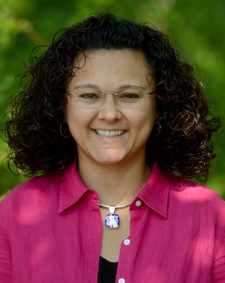
Marin
The number and type of Hispanic-Serving Institutions (HSIs) has been rising as a result of the increasing enrollment of Latino/a students in colleges and universities. Assistant Professor Patricia Marin is studying a small but growing phenomenon—high caliber research universities adding the HSI designation. As a Latina researcher, Marin is interested in how this trend affects the pipeline of Latino/a students in higher education. In a forthcoming paper, she and co-investigator Priscilla Pereschica examine two intersecting areas that have been understudied in the HSI literature: a research institution with very high research activity (formerly known as Research I institutions) and the experience of its graduate students.
Focus group insights
In the study, 45 diverse master’s and doctoral students at one institution were invited to discuss their awareness of the institution’s HSI status and their related experiences. Marin reports, “less than 1 percent of participants heard their institution referred to within the HSI context,” but they were quickly able to “consider the impact of the designation and related institutional issues, discussing both positive and negative potential effects.”
Participants said the institution should be public, positive and proud of its new HSI label and communicate that to all stakeholders. They also felt the HSI designation (and the increase in the Latino/a undergraduate population) would have educational benefits for the student body as a whole. Participants stressed, though, that access and admission for Latino/a students is not enough. Institutions need to focus on retention and providing services, support and resources to increase the graduation rates of Latino/a students. Participants recognized the designation could bring challenges, and they felt the institution would need to publicly address negative stereotypes about Latino/a students and the HSI designation.
Undergraduate spillover
Although graduate students are not included in the population that defines an institution as an HSI, participants in the study recognized how the diversification of the undergraduate student body could lead to increased diversity in the graduate student body. Also, while they acknowledged the possibility that graduate students might need training in issues regarding HSIs, Latino/a students and cultural competency, they were excited about the opportunities they might have to mentor and encourage Latino/a undergraduate students and to engage those students in research.
The study reveals how an institution’s HSI designation has an impact beyond undergraduate students and into the greater campus community. Marin suggests administrators should focus on the following goals in addressing their new HSI status:
- providing clear communication regarding HSI status, objectives and commitment;
- increasing graduate student involvement;
- addressing the campus climate and
- supporting the Latino/a educational pipeline through graduate school.
More HALE research
The Higher, Adult and Lifelong Education (HALE) faculty at Michigan State University studies a variety of topics across postsecondary education. The Center for Higher and Adult Education, funded by an endowment from Bruce Erickson, publishes a report highlighting faculty work each semester. These articles are excerpted from that report. To request a copy, call (517) 353-5187. For more information, visit education.msu.edu/ead/hale/center.




